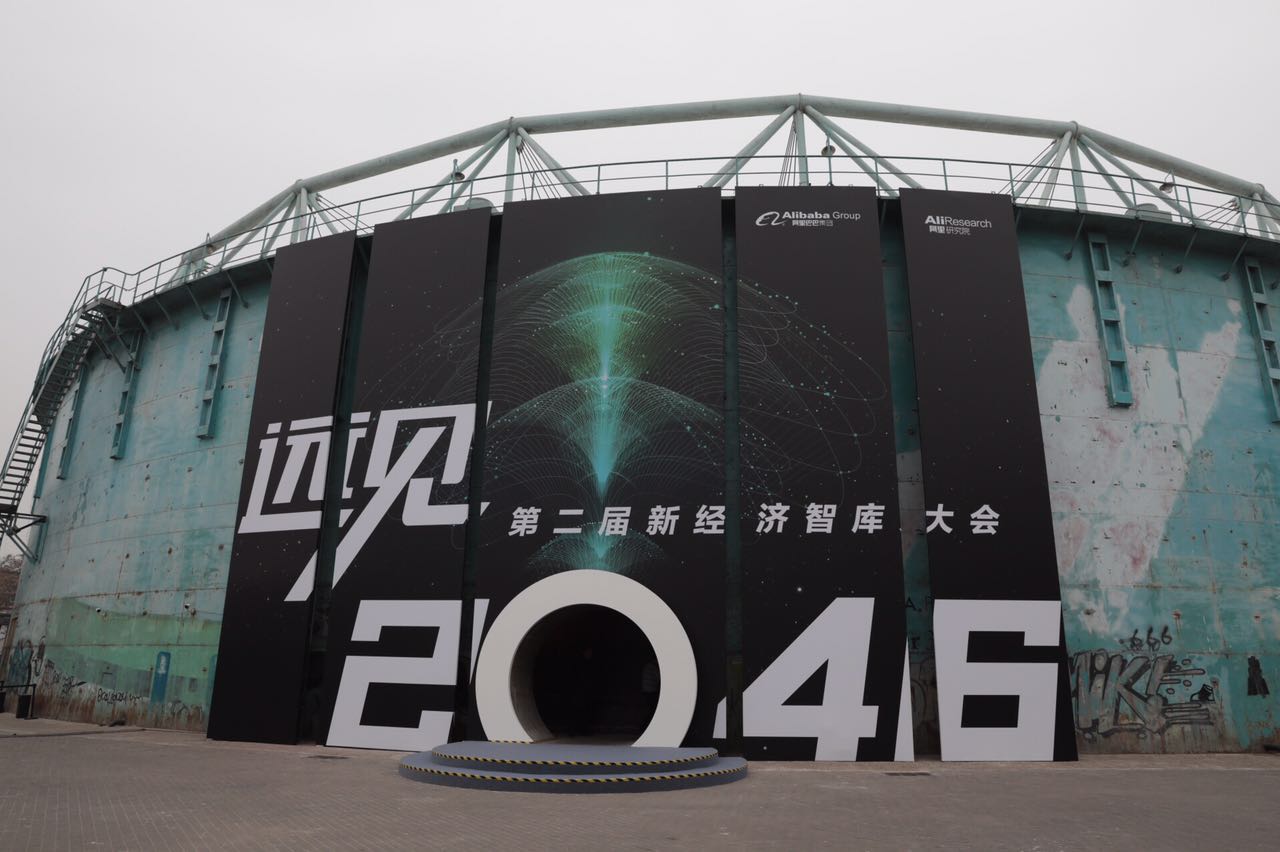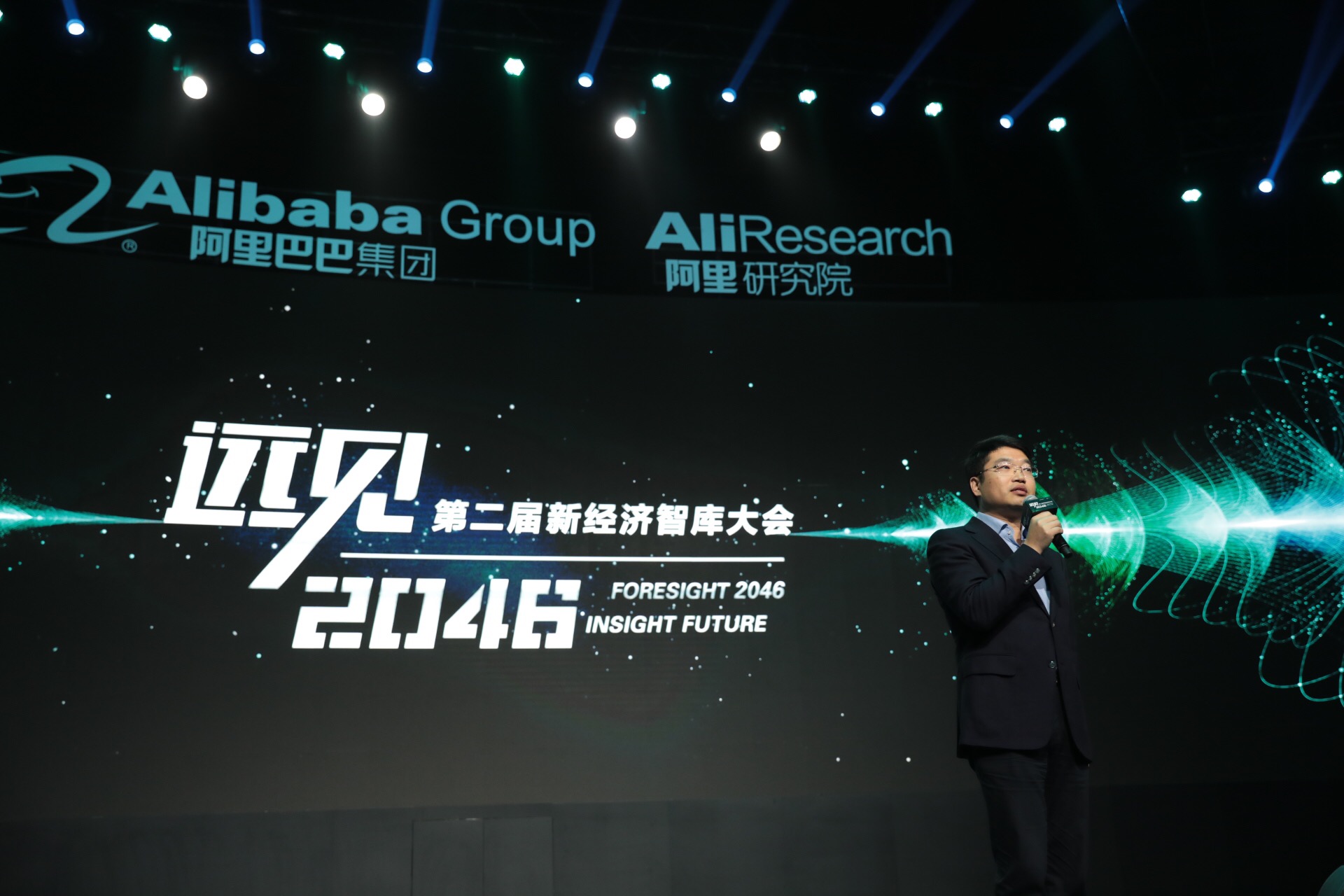[Global Science and Technology Comprehensive Report] On January 7, the "Vision 2046 - Second New Economy Think Tank Conference" sponsored by the Alibaba Research Institute was held in Beijing. With the theme of “Vision 2046â€, the conference focused on the future, centering on “2046, how will technology develop, how will business evolve, how governance needs to be innovative, where is the next subversion?†and more than 120 think tank institutions from home and abroad. 800 thinkers gathered together to discuss.

At the conference, "China Visionary Think Tank Tantan" was announced. Ten top countries and private think tanks from Peking University, Tsinghua University, the Academy of Social Sciences, the National Research Center, and the Alibaba Research Institute were jointly initiated and held a ceremony at the venue. . This is China's first think tank alliance in the new economic field. It aims to promote cross-border exchange among think tanks with expertise, gather insights from various think tanks, form forward-looking strategic research of common concern, and integrate research with internationally renowned think tanks.
Future new technologies: What next-generation human-computer interaction looks like?
The Chair of the Artificial Intelligence Committee of the World Economic Forum (WEF) and Justine Cassel, Associate Dean of the School of Computing at Carnegie Mellon University, shared the "Future of Human-Computer Interaction," she believes that the next generation of human-computer interaction The interface has two attributes: natural interaction through dialogue and body language; social mode instead of task mode. The biggest breakthrough of human-computer interaction is that the use of language makes the interface more intuitive and natural. This mainly depends on deep learning (machine learning) algorithms and natural language.
So what is the biggest impact of human-computer interaction in the future? Kassel believes that man-machine interaction in the future will include humans, so that we can include all types of people in the design. We get advice from real people and continue to iterate until the design is practical, ideal, and convincing.
New Economy in the Future: Platform Economies Will Replace Multinational Companies as Leaders
In 1998, the U.S. Department of Commerce issued a report on the emerging digital economy, which opened the curtain for the digital economy 1.0. After nearly 20 years of technological advancement, application penetration, business innovation, and ecological evolution, the development of the digital economy is moving into the 2.0 era of using the Internet platform as a carrier and data-driven.
At the conference, Gao Hongbing, Vice President of Alibaba Group and Dean of the Alibaba Research Institute released the "Digital Economy 2.0 Report - Farewell to the Company, Embracing the Platform."
The report believes that in the era of digital economy 1.0, multinational corporations took IT technology to the top. In the era of digital economy 2.0, a brand-new continent-platform economy was born based on DT technology. The employment relationship and the eight-hour work system are key words for the employment of multinational corporations. Self-employment and flexible employment are key words for employment in the platform economy.
Alibaba Research predicts that in the next 20 years, the eight-hour work system will be broken. China’s 400 million labor force will employ self-employed and free employment through the Internet, equivalent to 50% of China’s total labor force.
Due to the high barriers to entry and strong technology, 80-90% of international trade is currently controlled by multinational companies. The platform economy provides an infrastructure for international trade, breaking these barriers and allowing small businesses/individuals to participate in and benefit from global trade. In the next 30 years, 80% of global trade will be dominated by small businesses/individuals.
New jobs in the future: China's digital economy employment capacity exceeds 400 million in 2035
Digital technologies represented by the Internet, cloud computing, big data, Internet of things, and artificial intelligence will revolutionize the employment ecosystem.
Boston Consulting Group (BCG) released the report “Towards 2035:400 Million in Digital Economy Employment†at the conference. BCG predicts that China's overall digital economy will reach 16 trillion U.S. dollars in 2035, with a digital economy penetration rate of 48% and a total employment capacity of 415 million, of which the scale of eco- employment on the Alibaba platform will exceed 100 million.

Alibaba Group President Jin Jianhang
The development of digital technology has brought about an opportunity for China's manufacturing to make a transition to new manufacturing. BCG believes that in the short term, the new manufacturing will not reduce the overall employment demand on a large scale. Instead, it will create more, broader, and more valuable employment opportunities and force the skills of the employed people to increase. At the same time, new manufacturing can lead to industrial upgrading, stimulate industry competition, lower the prices of industrial products, create more markets, and indirectly create job opportunities.
According to the BCG report, machine intelligence and platform employment make the physical quality and geographical location of the employed no longer a constraint. Individuals living in remote areas or miniaturized organizations will access global job opportunities indiscriminately.
New Governance in the Future: Four Core Issues of Internet Economic Governance
New technologies bring new economies and the new economy calls for new governance. In order to further promote the study of Internet economic governance, in 2016, under the joint participation of more than 10 agencies such as government, industry, and research, the 50-member Forum of the Chinese Information Society initiated a major research topic on the “Internet Economic Governance Handbookâ€.
At the meeting, Xue Zhaofeng, professor of the National Development Institute of Peking University, published and analyzed the phased results of the "Internet Economic Management Handbook." The Task Force believes that there are four core issues in the governance of the Internet economy: Whose assets are? Whose responsibility? Who will test the water? Who should be aligned? In this regard, Prof. Xue Zhaofeng puts forward three major propositions: In accordance with the general principle of “the lowest total social costâ€, Professor XUE Zhaofeng proposes a roadmap for promoting the “fighting for fish, letting the bullets fly for a second timeâ€, focusing on the discovery and promotion of governance. Innovative best practices. In particular, he mentioned that the 49th order of the State Administration for Industry and Commerce in 2010 clearly stated that when a natural person submits identity information such as name and address to a network platform, he can conduct online business. This is China's major institutional innovation in the field of Internet economic governance, and it is also a major contribution to the global Internet economic governance. â€
New Think Tanks in the Future: China's First Think Tank Alliance in the New Economy Sets Off
Think tanks, as an important intellectual production organization, are a source of ideological innovation in a nation. As think tanks play an increasingly important role in the economic and social development of various countries and the handling of international affairs, their development is becoming a national or regional governance capability. Important embodiment. To this end, building a high-level, international think tank has become a global trend.
At the conference, the inauguration ceremony of Yantan, a Chinese visionary think-tank, was held grandly. The School of Public Administration of Tsinghua University, the Institute of Economics of the Chinese Academy of Social Sciences, the National Institute of Resources Research and Development Center, Guanghua Management of Peking University, Huawei Strategy Department, BOE Industrial Research Center, and information The representatives of the 50 social forums, Huaxia Cornerstone Consulting, Alibaba Research Institute and the Competitiveness Think-tank's 10 sponsoring units jointly took the stage and witnessed this very historic moment.
The first rotating chairperson for the president of the Tsinghua Institute of Public Administration, Xue Hao, stated that we are committed to turning this Tantan into a positive energy center and internationalization that brings together original technological ideas, pioneering business models, and transforms creative ideas into innovative values. platform. The first batch of institutions will be 10 think tanks, and the next year will attract more Chinese and foreign think tanks and expand it to 30.
At the meeting, Zhu Xufeng, leader of the China Think Tank Big Data Reporting Task Force and Vice Dean of the School of Public Administration of Tsinghua University, released the “2016 China Think Tank Big Data Reportâ€. This report passes big data analysis of think tanks and expert speeches in social media. , launched the annual China Think Tank Big Data Ranking. This is the first time that domestic think tank rating agencies have ranked through social big data.
According to the comprehensive scores, the China Science and Technology Association, the Chung Yang Finance Research Institute of the People's University of China and the Central Party School of the Communist Party of China are among the top three shortlisted think tanks, and other top TOP10 think tanks include the Chinese Academy of Social Sciences, the Pangu think tank, the China and Globalization Center, and the China Finance 40 Forum. , the First Financial and Economic Research Institute, Hopeful Think Tank and China Electronic Information Industry Development Research Institute.
KNB6-40 Miniature Circuit Breaker
KNB6-40 Mini Circuit breakers, also named as the air switch which have a short for arc extinguishing device. It is a switch role, and also is a automatic protection of low-voltage electrical distribution. Its role is equivalent to the combination of switch. Fuse. Thermal Relay and other electrical components. It mainly used for short circuit and overload protection. Generally, According to the poles, mini Circuit breaker can be divided into 1P , 1P+N , 2P, 3P and 4P.
KNB6-40 Miniature Circuit Breaker,Electronics Miniature Circuits Breaker,Automatic Miniature Circuit Breaker,Mini Circuit Breaker
Wenzhou Korlen Electric Appliances Co., Ltd. , https://www.zjaccontactor.com
